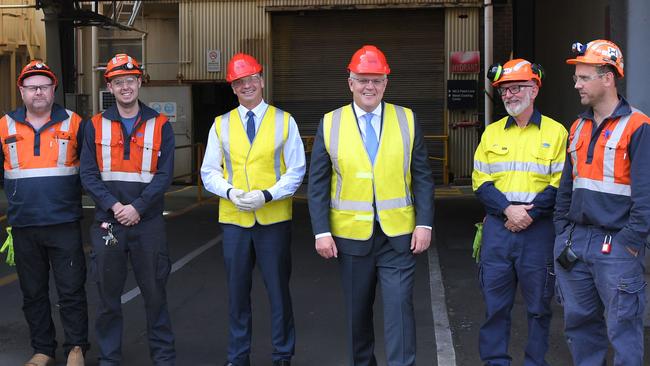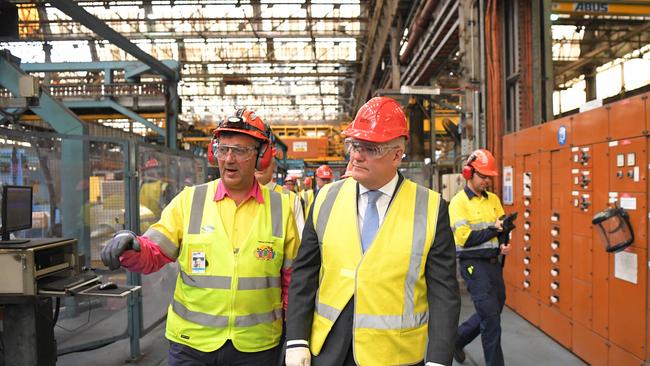Low-emission new technology gets $1.9b boost as PM announces move away from wind, solar
Prime Minister Scott Morrison arrived at BlueScope in Port Kembla on Thursday where he announced a new plan to invest in hydrogen and carbon capture and storage rather than “mature” technologies like wind and solar.

Illawarra Star
Don't miss out on the headlines from Illawarra Star. Followed categories will be added to My News.
- Hells Angels president escapes jail over vicious pub brawl
- Revealed: Which Illawarra suburbs have the most drug dealers
Prime Minister Scott Morrison has today announced a major expansion to the rules governing Australia’s two renewable energy agencies, allowing them to fund a wider range of “low emissions” energy sources.
Mr Morrison visited Port Kembla’s BlueScope steel on Thursday, where he unveiled a $1.9 billion investment package aimed at prioritising hydrogen technologies and programs to allow businesses and communities to reduce their energy bills.
Under the new legislation, the Australian Renewable Energy Agency (ARENA), which manages the government’s renewable energy programs and the Clean Energy Finance Corporation (CEFC) will be able to support new technologies that produce low emissions.
Currently, ARENA can only support wind and solar projects, while CEFC can only invest in projects that produce less than half the emissions of the grid average.

Mr Morrison said energy sources like wind and solar were no longer in need of subsidies given they are “mature” technologies, noting the new legislation would focus on supporting technology like carbon capture and storage and the production of “green steel”.
“These investments create jobs and they bring new technologies into play,” the Prime Minister said.
“This will not only cut emissions, but deliver the reliable energy Australia needs while driving down prices for homes and businesses.”
As part of the package, $70.2 million will be spent setting up a hydrogen export hub to “scale-up” demand.
The government will also spend $67 million on backing new microgrids in regional and remote communities to deliver affordable, reliable power. While just over $50 million will go into energy productivity measures to help energy efficiency in residential and commercial buildings.

Minister Energy and Emissions Reduction Angus Taylor, who was also present for the announcement, said getting the next generation of energy technologies right would not only help to keep prices low and the lights on, but would importantly grow jobs, strengthen the economy and reduce emissions.
“We will reduce the cost of new and emerging technologies, not raise the cost of existing technologies or layer in new costs to consumers and businesses through mandated targets or subsidies,” he said.
Despite the Liberal Party attacking Labor over its 2018 election promise to spend $57 million on increasing the number of electric vehicles across the county, Thursday’s announcement included more than $70 million to incentivise the building of regional charging or refuelling stations for electric, hydrogen and bio vehicles.

